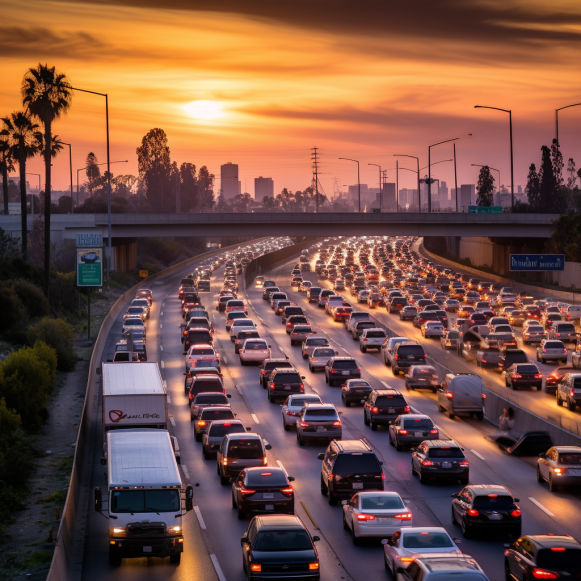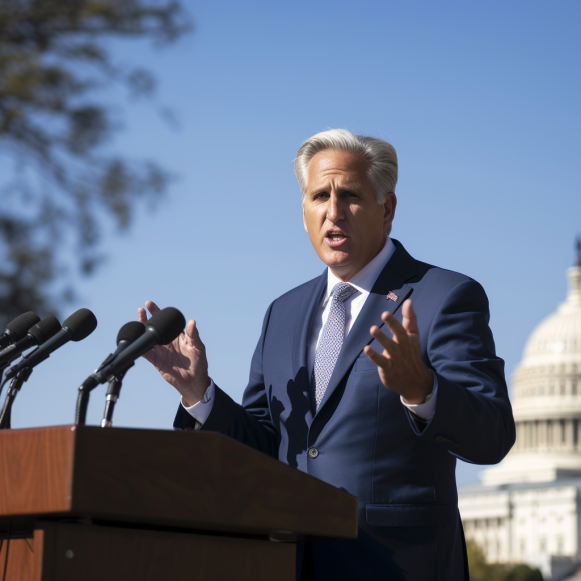Big federal dollars for small state projects aim to get more cars off the roads

Alternatives include sidewalk installation and improvements, bike share programs and more.
A 60-mile pedestrian and cycling trail in Arkansas, an electric street sweeper in Oregon, and truck parking facilities in Florida don’t appear to have much in common, let alone any resemblance to a California highway conversion to toll roads or a roundabout in Michigan.
However, the Carbon Reduction Program, a five-year, $6.4 billion federal program to reduce tailpipe emissions that contribute to global warming, will fund all of the projects. The CRP was authorized by the 2021 Bipartisan Infrastructure Law, a $1.2 trillion federal investment in everything from roads and bridges to the electrical grid.
The CRP pales in comparison to the infrastructure bill’s $40 billion pledge to repair the country’s bridges. However, it has the potential to be very powerful in terms of bringing to life transportation alternatives, or small-scale infrastructure designed to take cars off the road and thus reduce emissions. They include new and improved sidewalks, pedestrian walkways, bike lanes and trails, and bike share programs.
According to Kevin Mills, vice president of policy at Rails-to-Trails Conservancy, which advocates for money for walking and bicycling trails and has been keeping a close eye on how the CRP will boost funding for its priorities, it takes much less money to make an impact on transportation emissions with such programs.
“This program has a big purpose and not a great amount of money given the task before us,” Mills went on to say. “What becomes important is that we make the most of what is a relatively small new program in order to demonstrate its value and, hopefully, grow it in the future.” This places a premium on items that provide the most bang for your buck.”
While the larger infrastructure bill was being debated, many U.S. House Democrats wanted it to allocate more funds to climate change-related measures and less to highway projects. Following its passage, 16 Republican governors complained about an internal Federal Highway Administration memo encouraging states to prioritize existing repairs, public transportation, and bike lanes over highway expansion projects.
States must submit carbon reduction strategies demonstrating how they will use federal funds to reduce transportation emissions in the coming weeks. States will be required to identify specific projects and approaches to achieve the goals outlined in their CRP plans, according to Elle Segal, advocacy outreach director at Rails-to-Trails Conservancy. The federal program requires states to explain how they plan to reduce emissions by November 15.
States have the option of redirecting up to 50% of the carbon reduction funds to other federally funded transportation projects that do not include an explicit greenhouse gas reduction component. To the chagrin of climate activists and progressive transportation planners, some states have done just that. (States can also redirect funds from other federal formula programs to the carbon reduction program.) In some cases, the transfer is only a temporary measure, and the money will be returned; for example, dollars for carbon reduction began flowing to states a year before the carbon reduction strategy plans were due, and some states had yet to outline their priorities for cutting emissions.
Maryland is focusing on three areas to reduce transportation sector emissions, according to Deron Lovaas, director of the Maryland Department of Transportation’s Environment and Sustainable Transportation program. The most pressing strategy, he says, is to increase the number of electric vehicles on the road, starting with cars, sedans, pickup trucks, and SUVs and then moving on to medium- and heavy-duty vehicles. This includes directing federal funds to electrify state and local government vehicle fleets.
The next step is to reduce overall traffic or vehicle miles traveled. This entails a “array of measures,” according to Lovaas, such as investments in public transportation, such as rail, bus, and shuttle service, as well as making sidewalks and roads safer for bicyclists, pedestrians, and people in wheelchairs.
He believes it is critical for states to be transparent about their carbon reduction strategies. This will allow states to learn from one another while also providing accountability for how federal funds are spent to reduce greenhouse gas emissions.
“It’s an important document because carbon reduction from transportation is challenging and requires a multi-year strategy,” he said. “That’s how we’re interpreting this document.” We see it as critical not only for informing the Carbon Reduction Program, but also for reflecting Maryland’s overall strategy to decarbonize transportation.”
Many states, including California, Colorado, and Massachusetts, already have transportation emissions laws in place. Washington, for example, bases its CRP strategy on its 2021 State Energy Strategy. Oregon’s Carbon Reduction Strategy evolved from the state’s 2013 plan to reduce carbon emissions by 2050, as well as a statewide transportation strategy that was updated this year. Oregon’s state-wide greenhouse gas emission goals are also codified in state law and executive order.
“We built the carbon reduction program on that strong foundation of actions,” said Brian Hurley, the Oregon Department of Transportation’s mitigation program manager. “We did not have to start from scratch.”
When it comes to carbon reduction policies, the Minnesota Department of Transportation’s description may best reflect a hard truth in many parts of the country, regardless of political affiliation: “Land use patterns and unsafe, inconvenient alternatives make driving alone the most convenient choice for many Minnesotans.” Cars in Minnesota are mostly powered by fossil fuels, which emit carbon dioxide and other pollutants into the atmosphere.”
“Some states are actually way ahead of us federally, in terms of their level of climate ambition and the creativity that they’ve brought to this and the steps that they’ve taken,” Transportation Secretary Pete Buttigieg said last year to The Washington Post. “Others, we’re pulling along and really working to encourage them.”
The Carbon Reduction Program is a five-year, $6.4 billion federal initiative designed to reduce tailpipe emissions that contribute to global warming.
Florida Republican Gov. Ron DeSantis vetoed a budget provision this summer that would have allowed state agencies to seek federal funds through a U.S. Environmental Protection Agency grant to improve building energy efficiency. However, Florida has not refused the $320.4 million in CRP transportation funding that the state will receive over the next five years. Florida intends to call for a reduction in single-occupancy vehicle trips as well as making it easier to use vehicles or modes of transportation with lower emissions in its Carbon Reduction Strategy. The state’s strategy will also call for the use of low-emission construction techniques.
Florida will spend $46 million to construct 26 truck parking areas that will include commercial EV charging stations and other amenities. Safe rest stops for truckers have long been scarce, but the growth of e-commerce has increased the number of trucks on the road, further straining the parking supply. Truckers spend more time on the road looking for safe places to park when they don’t have a place to stop for federally mandated rest periods, which means more time spewing CO2 out of tailpipes. Truck parking shortages are regarded as a “national safety concern” by the Federal Highway Administration’s Office of Freight Management and Operations.
Florida is also planning significant investments in its SUN Trails system, according to Huiwei Shen, chief planner at the Florida Department of Transportation, who spoke at a Rails-to-Trails Conservancy seminar earlier this year. The state legislature provided a one-time $200 million infusion to the non-motorized, shared-use paths this year.
“It’s a great time for trails in Florida,” she said. “It would contribute greatly towards the vision of a statewide interconnected trail system in Florida, and we want to be the No. 1 trail destination internationally.”
The state of Oregon has $82 million to spend over the next five years. It set aside $13 million for projects in smaller cities and rural areas, as well as for tribes; the federal program requires that 65% of the funds go to larger metropolitan areas. Because the majority of the money will go to areas of the state with more congestion, the Oregon Department of Transportation wanted to help smaller communities make some progress on reducing carbon emissions as well, according to Rye Baerg, a climate program coordinator with the Oregon Department of Transportation. Among the projects are e-bike lending libraries, solar streetlights, and even electric-powered street cleaners designed specifically to clean pedestrian and bike paths, making them safer and more appealing to users.
“We had a lot of counties, a lot of small cities, interested in charging and those types of things,” Baerg told me. “I think that we saw a lot of interest in our first round of call for projects and I expect to see even more interest now that people know what types of things we’re funding and have a better sense of what the program is next year.”
Small changes add up, according to Lovaas of the Maryland Department of Transportation. For example, if Maryland invests in a new transit line with Carbon Reduction Program funds, the effect of municipal or state policies encouraging transit-oriented development can be multiplied, according to Lovaas. Investing in safe street programs, he added, reduces the number of car trips people take and thus their emissions.
“So for the short trips, you actually can replace them with walking or biking or rolling or some non-motorized mode,” he went on to say. “You add all that together and you get a pretty big effect.”
States Newsroom, a national nonprofit news organization focused on state policy, owns Stateline.





